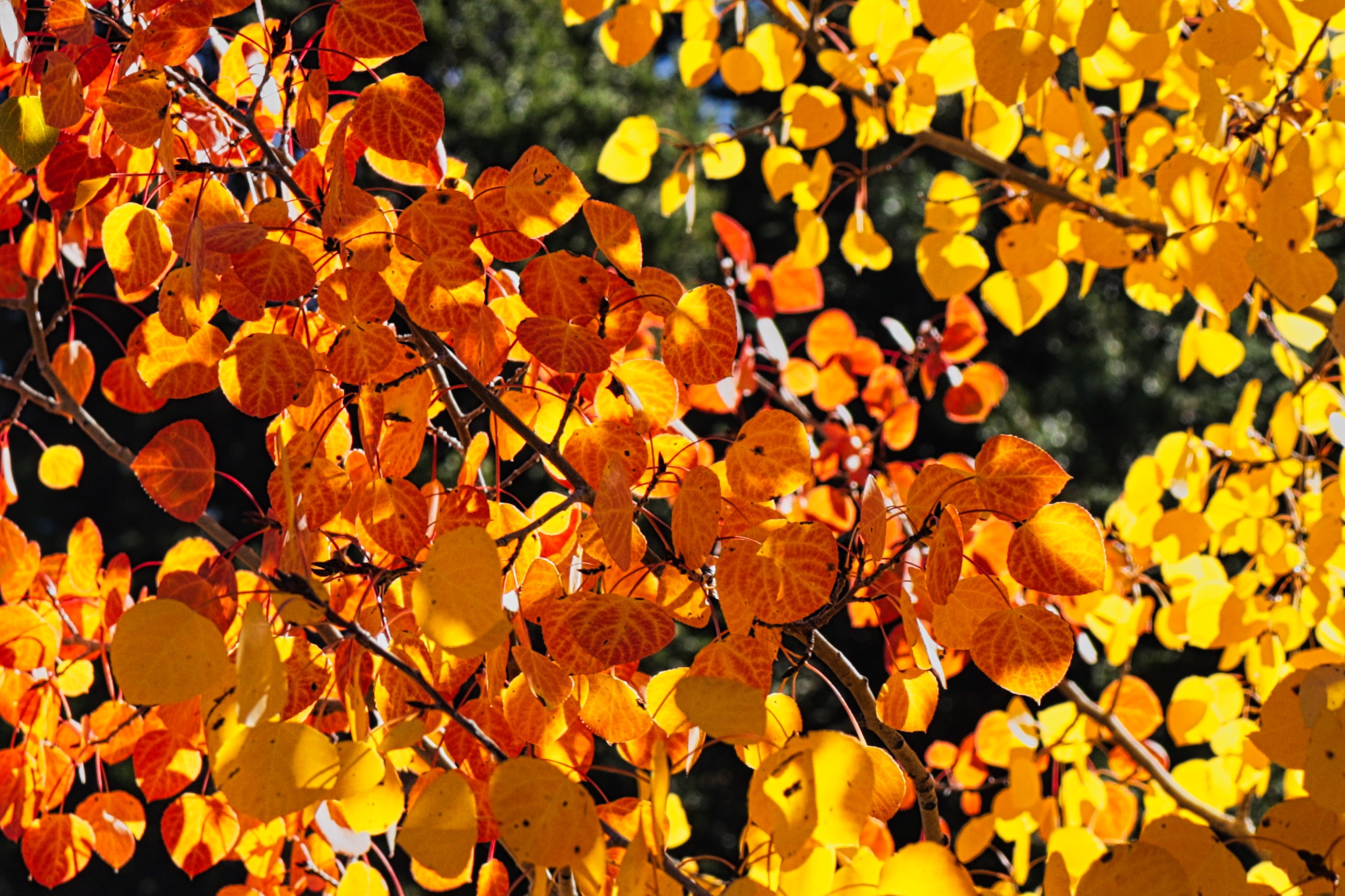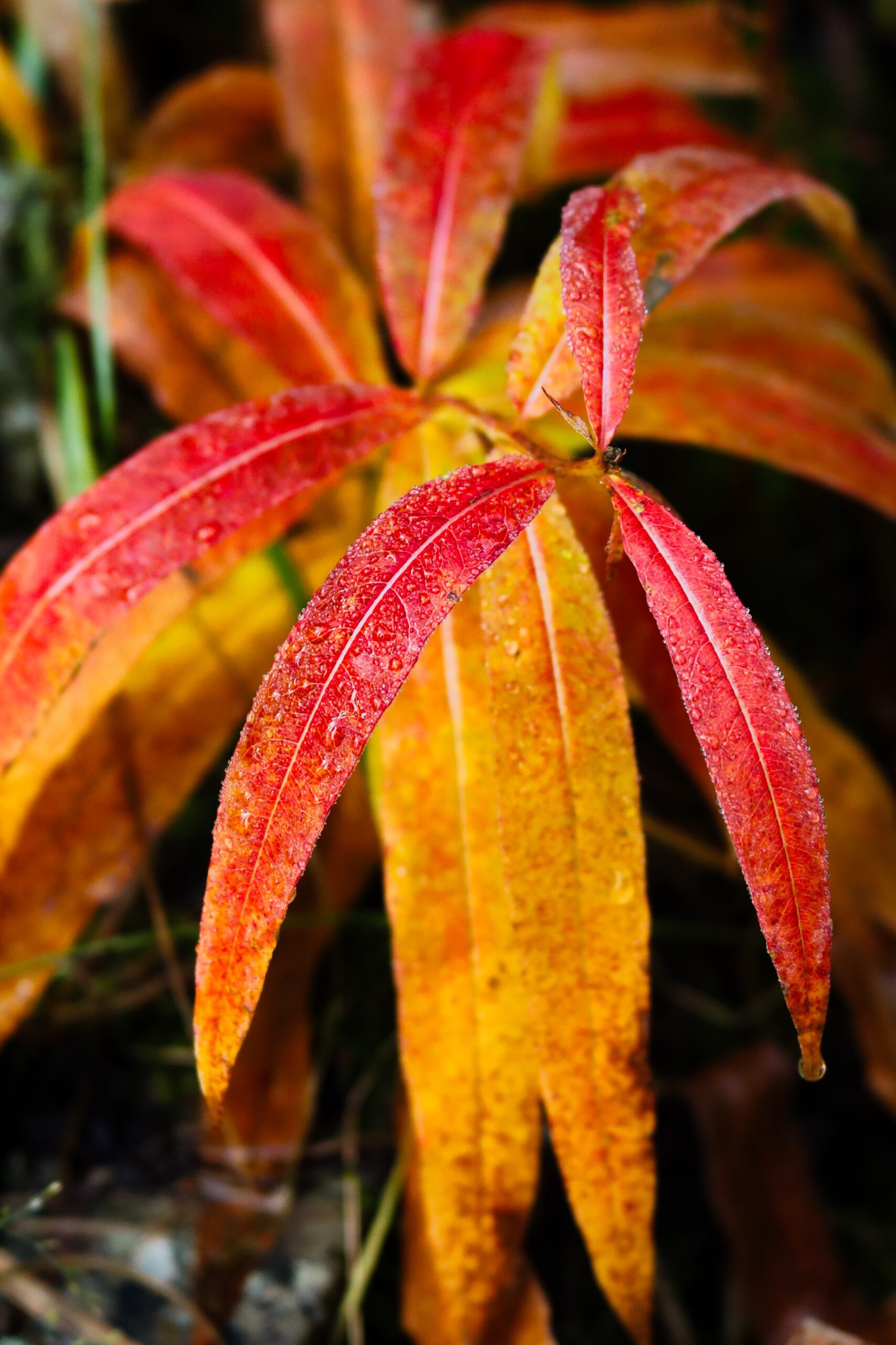Opinion
Local Knowledge: Falling for you
Published
1 year agoon
Posted By
AdminBy Paul Swenson EBS COLUMNIST
I remember the third date I had with my last girlfriend, now my lovely wife. I wanted to impress her with the beauty of fall in Montana. I knew that she had moved here from the Boston area, a region known for its incredible fall colors. Thinking that she might be missing home a little bit, I wanted to show her our local leaf displays, which are a bit more subtle.

It was the beginning of October and we had just gotten a fresh dusting of snow in the mountains, so we headed out for a hike. As we walked along the trail, we rounded a corner and faced an aspen grove in all its splendor; blazing yellow with touches of orange surrounded by the intense green of lodgepole pine frosted with new snow. I turned around to look at my new friend’s face and could see she appreciated it as much as me. She then bent a pine branch over and started eating the snow off of it like cotton candy.
“My kind of soul,” I thought.
Now, 25 years later, it’s fall again and we love hiking around looking at the colors. It’s amazing how many different shades of purple, red, orange, and yellow we have here. Not only do the big trees and shrubs have gorgeous leaves, but so do the small plants like grasses and other vascular plants that have been growing all summer. You only have to walk as far as outside to see this transition of color happening. But why does the green of summer give way to the other colors this time of year? And why do pine, spruce and fir trees remain green?


Let’s start with why plants have green leaves in the first place. Hopefully you can all blurt out the answer together: Chlorophyll. This name comes from the Greek words chloros (green) and phyllon (leaf). Yay, everyone paid attention to their teachers from kindergarten to college biology. But why is chlorophyll green?
Sunlight starts out “white” meaning it contains all the colors of the spectrum. When it hits a surface, what is reflected is the color we see, so the rest of the colors must be absorbed. This means chlorophyll in the plant absorbs the violet, blue, red, orange and yellow frequencies of light. It is these frequencies that are used in the process of photosynthesis to provide energy for splitting carbon dioxide and water molecules and recombining them to make the sugars plants use to store energy and grow.
During the growing season, chlorophyll is the dominant molecule in the plant’s leaves, but with the shortening of the days in fall, and cooler temperatures, chlorophyll in the leaf starts to degrade. As this molecule disappears, others get to take their time in the spotlight, or sunlight in this case.
First, carotenoids are a class of pigments found in plants that help prevent photodegradation. Basically the plant’s sunscreen, they also play a minor role in photosynthesis. They are also used by plants as precursors of hormones in non-photosynthetic organs, as antioxidants, and as color attractants in flowers, leaves, and berries. Carotenoids are yellow, orange, red and purple in color.
The second type of molecule that gets to express itself in the fall is Anthocyanin. This molecule is formed in leaves as the sugar concentration increases with the onset of fall. The colors of this molecule can be red, blue, purple and magenta. One might notice that some leaves start out yellow, and as the sugar content increases they change to orange then red. This is especially true in trees such as maple and oak, and in our region, we must look to our smaller plants such as dogwood, chokecherry and huckleberry.


But why do these leaves die off while evergreens get to keep their leaves? For a tree, it takes energy and water to grow and maintain leaves, and this energy comes from the sun. So as the daylight hours shorten into fall, there is not enough energy, or water, for deciduous trees to maintain their broad leaves. Also, when the temperatures go below freezing, water in the cells of the leaves form ice crystals that can lance cell walls and membranes, killing the leaves.
On the other hand, pine, fir, and spruce trees have needles with a waxy coating, small surface area to volume ratio, and resin and other chemicals that act as an antifreeze, so they can conserve water, not freeze, and continue to photosynthesize all winter.
So how do you fall? I suggest going for a walk with a friend or loved one and see how many different colors you can find. Don’t only look up at the big trees, but stoop over and look at the small wonders that produced incredible flowers in the summer and now produce lovely shades of autumn color.
Paul Swenson has been living in and around the Big Sky area since 1966. He is a retired science teacher, fishing guide, Yellowstone guide and naturalist. Also an artist and photographer, Swenson focuses on the intricacies found in nature.
Upcoming Events
november, 2024
Event Type :
All
All
Arts
Education
Music
Other
Sports
Event Details
Spanish Classes with World Language InitiativeThese unique, no cost Spanish classes are made possible by the contribution of Yellowstone Club
more
Event Details
Spanish Classes with World Language InitiativeThese unique, no cost Spanish classes are made possible by the contribution of Yellowstone Club Community Foundation (YCCF) and Moonlight Community Foundation (MCF). This class will focus on building a lifelong affinity for world languages and cultures through dynamic and immersive Communicative Language teaching models.
Beginner Class – Mondays and Wednesdays from 5:30-6:30 pm
Intermediate Class – Mondays and Wednesdays from 6:45- 7:45 pm
- Classes begin Oct.7, 2024 and run for 6 weeks
- Class size is limited to 12 students
- Classes are held in Big Sky at the Big Sky Medical Center in the Community Room
For more information or to register follow the link below or at info@wlimt.org.
Time
October 21 (Monday) 5:30 pm - November 27 (Wednesday) 7:45 pm
Location
Big Sky Medical Center - Community Room (2nd Floor)
Big Sky Medical Center - Community Room (2nd Floor)
Event Details
Spanish Classes with World Language InitiativeThese unique, no cost Spanish classes are made possible by the contribution of Yellowstone Club
more
Event Details
Spanish Classes with World Language InitiativeThese unique, no cost Spanish classes are made possible by the contribution of Yellowstone Club Community Foundation (YCCF) and Moonlight Community Foundation (MCF). This class will focus on building a lifelong affinity for world languages and cultures through dynamic and immersive Communicative Language teaching models.
Beginner Class – Mondays and Wednesdays from 5:30-6:30 pm
Intermediate Class – Mondays and Wednesdays from 6:45- 7:45 pm
- Classes begin Oct.7, 2024 and run for 6 weeks
- Class size is limited to 12 students
- Classes are held in Big Sky at the Big Sky Medical Center in the Community Room
For more information or to register follow the link below or at info@wlimt.org.
Time
October 28 (Monday) 5:30 pm - December 4 (Wednesday) 7:45 pm
Location
Big Sky Medical Center - Community Room (2nd Floor)
Big Sky Medical Center - Community Room (2nd Floor)
Event Details
Spanish Classes with World Language InitiativeThese unique, no cost Spanish classes are made possible by the contribution of Yellowstone Club
more
Event Details
Spanish Classes with World Language InitiativeThese unique, no cost Spanish classes are made possible by the contribution of Yellowstone Club Community Foundation (YCCF) and Moonlight Community Foundation (MCF). This class will focus on building a lifelong affinity for world languages and cultures through dynamic and immersive Communicative Language teaching models.
Beginner Class – Mondays and Wednesdays from 5:30-6:30 pm
Intermediate Class – Mondays and Wednesdays from 6:45- 7:45 pm
- Classes begin Oct.7, 2024 and run for 6 weeks
- Class size is limited to 12 students
- Classes are held in Big Sky at the Big Sky Medical Center in the Community Room
For more information or to register follow the link below or at info@wlimt.org.
Time
November 4 (Monday) 5:30 pm - December 11 (Wednesday) 7:45 pm
Location
Big Sky Medical Center - Community Room (2nd Floor)
Big Sky Medical Center - Community Room (2nd Floor)










